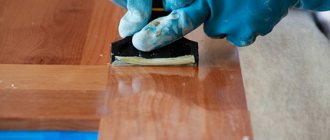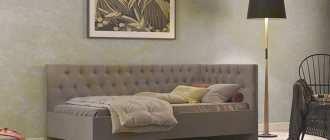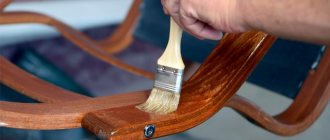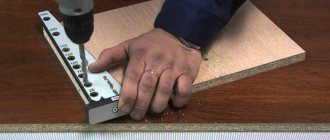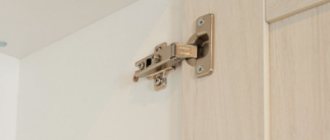It has long been no secret to readers of my articles that I am constantly in search of ideal materials for creating things needed in the household, be it a cutting board, metal shelves with hooks for the hallway or entire furniture ensembles for the living room.
I pay special attention to my favorite area of activity, namely furniture. Agree, it is priceless and simply pleasant to contemplate in the interior what was made with your own hands, and even with skill, masterfully, according to your own drawings! However, you can take ready-made sketches, the Internet is full of them, and add any nuances of your own.
I am used to devoting an impressive part of my time to details, especially to the choice of materials suitable for a particular product. We are talking here not only about the wood itself, but also about what will preserve its texture and quality for many years. Of course, I'm talking about the topcoat.
In this article we will not touch on paint, which hides the unique wood color and pattern, however, I will definitely devote a separate detailed analysis to it.
Today I propose to talk about furniture varnish: why they love it, what types of varnish there are, about proper use, tools and application features.
Advantages of lacquered furniture
- Natural wood in its entirety is not only associated with ecology, but also looks attractive in any interior, no matter what style you choose. Varnishing - whether glossy or matte - gives the wood a touch of sophistication, nobility and some monumentality.
- The varnished surface is incredibly easy to clean, because any stains and fingerprints are erased in a second.
- In addition to external advantages, lacquered furniture is reliably protected from dirt, dust and moisture, as well as from accidental mechanical damage.
- One of the main advantages is the ease of restoration: there are special care products that we will look at a little later.
Tools for applying varnish
Depending on the characteristics of the surfaces and the chosen type of varnish, you may need various tools to work with it effectively and quickly, namely:
Spray gun (spray gun)
Distributes the varnish in an even thin layer, instantly covering large areas. This tool should be used in protective overalls, goggles and a respirator.
Roller
Designed to work on flat surfaces. Covers large areas of the product evenly and quickly with varnish.
Brush
The most common tool. Allows you to process hard-to-reach areas and uneven areas of the product.
It is better to choose bristles of medium length, and also pay attention to the fact that they can be artificial (suitable, for example, for acrylic varnishes) and natural (an excellent option for alkyd ones).
Features of partial restoration
Oak products are quite strong, so restoration of oak furniture is mostly carried out partially. In this case, techniques such as decoupage or artificial aging are used. Let's take a closer look at how to partially restore wooden furniture. To do this, we prepare the following tools:
- adhesive composition for decoupage;
- acrylic based paints;
- scissors;
- napkins with the desired pattern;
- craquelure varnish.
Let's look at how to restore old furniture with your own hands using the example of an antique table top. When updating some areas, they must be fenced off from others. Therefore, we use masking tape to protect the unnecessary surface area. Then we carry out the following operations:
- We paint the selected part with green acrylic paint and give it time to dry thoroughly.
- A craquelure varnish is applied over the paint, and we also wait for it to dry.
- The next layer of paint will be beige in color, after some time the coating will begin to crack. To speed up the formation of cracks, you can use a hair dryer.
- At the next stage, cut out the design you like from napkins. We place the images on the surface of the tabletop and coat the top with decoupage glue.
- When the glue dries, apply a finishing coat of clear varnish.
Important! All work must be carried out with a horizontal surface. This will prevent the formation of smudges and streaks.
As a result, we get a table with decoupage elements, which, by and large, will not differ from antique products.
On video: a chair using decoupage technique.
Proper care of lacquered furniture
As we already know, varnish coating reliably protects wood from any external influences, even mechanical damage. Caring for a varnished surface is extremely simple and does not require any special skills.
To clean furniture from dirt you may need:
Soft microfiber cloth
It practically does not electrify the surface, and also does not leave streaks on it.
Cotton swabs or soft brush
They will come in handy if there are stubborn stains on the furniture.
Thin soft leather or suede
An easy way to add shine to a varnished surface after cleaning.
Methods for cleaning lacquered furniture:
- Special wipes for lacquered furniture
They contain antistatic substances and wax-like ingredients that give the surface a pristine shine and cleanliness.
- Protective polish
Rub into the surface with a microfiber cloth. Visibly renews the varnish, removing visible traces of use. Application does not require any special skills.
- Another method is cleaning with ammonia (1 part alcohol mixed with 6 parts water).
- You can also use wax melted over low heat. In this case, a clean linen cloth is used, with which the wax is thoroughly rubbed into the varnished surface.
- For cleaning purposes, do not use soap solutions or alkaline compounds, as they can damage the varnish. The same applies to abrasive sponges.
Restoring polishing
Restoring a layer of varnish is a complicated matter. Any furniture restoration begins with cleaning and degreasing, and repairing the varnish coating too. We use dishwashing detergent diluted in water: safe and reliable. After drying, we proceed to refinishing the polish.
- On dark furniture, a scratch can be painted over with iodine, achieving the desired color in a number of layers or diluting it with water. If you have furniture markers, you can use them.
- Deep scratches that have turned white cannot be painted over like this. There are other methods: Make mastic from 4 parts melted wax and 3 parts turpentine. This paste is applied to the polish and rubbed with a soft cloth.
- If you have shoe polish of a suitable color, you can cover it with it and then polish everything with a cloth.
Scratches are painted over, then the coating is restored
You can simply refresh the faded polish on furniture using mixtures you prepare yourself:
- Two parts each of linseed oil and turpentine and one part vinegar. Mix everything, apply with a swab, wait until it is absorbed and polish.
- Mix oil and beer in equal parts and wipe the furniture with this mixture. After it has been absorbed, rub.
- The surface will be more shiny if you boil beer with a piece of wax, cool it and apply it slightly warm to the furniture. When the composition is absorbed, the surface is rubbed until shiny.
A few more recipes in the video.
How to remove polish from furniture
Quite often you have to remove the polishing: it is not the most fashionable finish. Modern furniture is most often painted with opaque or tinted paints, and the surface is matte. In any case, the polish must be removed. There are several ways. Since varnishes come in different compositions, you have to select them experimentally. But one of the methods should work.
- You can remove old polish from furniture mechanically. If you have a sander, the process will go faster; if not, take coarse-grain sandpaper and remove the varnish layer until wood appears. Then take a fine grit and sand it to a smooth surface. Mechanical removal does not always work. Sometimes even a grinder does not give results: the polish does not come off, but begins to melt and stink. Then they change tactics.
- You will need a piece of old glass. Put on gloves and break it into several fragments. Use the sharp edges that have formed to scrape the coating down to the wood. If there are chamfers and recesses, it is convenient to scrape them out with sharp edges. After the main layer of polishing is removed, everything is brought to a smooth state using fine-grain sandpaper.
Often, restoring furniture with your own hands requires tough measures: some types of polishing can only be scraped off with glass - If working with glass does not appeal to you, chemical methods remain. There are ready-made products for removing polish. You can work with them either in the open air or in a draft: the fumes are harmful. How to remove polish - you need to read on the packaging. The means are different and the duration and order of processing may vary.
How to paint polished furniture
If old furniture was prepared for painting, it must be cleaned of dust, wiped with a damp cloth and allowed to dry. Then level everything with putty, smooth out all the unevenness, wait until it dries. Take sandpaper and sand again, first with medium, then with fine grain. Next, apply a layer of primer and wait for it to dry.
Applying varnish with a brush when restoring furniture polish
You buy a primer for the paint you are going to use, or you can dilute the paint with a compatible solvent and coat it instead of primer. After drying, you can paint.
You can paint with a roller or brush. Usually several layers are needed: do not try to apply a lot of paint at once, as drips may appear. It is better to apply several thin layers. This way the surface will be smooth and uniform. Another trick: for uniform coloring, layers are applied in different directions - along, then across. This also applies to applying varnish.
Some types of varnish are easier to work with when they are warm. They are heated a little and then applied with a spray gun or brush. When heating, you need to be careful: vapors may flare up.
In order of painting: first paint the internal surfaces, edges and joints, then move on to the external ones. With this sequence, there is less chance of getting dirty or touching an already painted surface, ruining it.
If the varnish coating is smooth, without defects, and it needs to be painted over, you can do without removing this layer. There are special primers for complex surfaces. Apply them to the surface and paint after drying. They have components that penetrate even the varnish layer. Therefore, the paint will apply well and last a long time. But such soils have a disadvantage: they are expensive. But they save significant time.
Some secrets of painting wood (including brushing and painting in two colors) are in the article “How to paint lining.” Watch the video for a few secrets to applying acrylic paint evenly.
If the restoration does not bring the expected result, maybe you need to change the appearance? How to remake furniture in a new way is described here.
